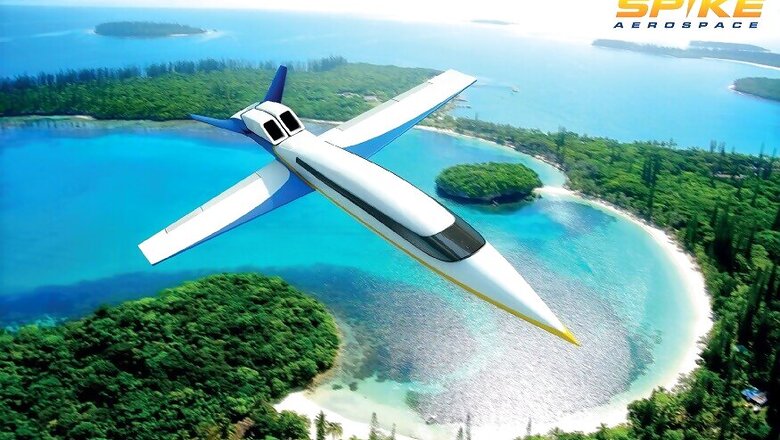
views
The prototype of a supersonic jet designed to slash flight times by half has successfully completed its first test flight, bringing the next-generation jet another step closer to reality. Boston-based Spike Aerospace completed a total of seven short subsonic flights at a private test field in New England over the weekend, to test the design and flight controls of its SX-1.2 demonstrator aircraft, the prototype for its S-512 Quiet Supersonic Jet. Between each unmanned test flight, engineers made adjustments to the aircraft's centre of mass, balance and control surfaces, and collected data on the plane's performance.
"The SX-1.2 test flights were conducted in a real-world situation, and provide significantly more data than wind tunnel tests done in an artificial environment," said Spike president and CEO Vik Kachoria in a statement. "We were able to test not only handling but also a range of other considerations." Spike Aerospace says they want the first S-512 aircraft take to the skies by early 2021 and customer deliveries to begin in 2023.
When the jet enters commercial service, it will seat up to 22 passengers and boast a range of 6,200 miles (nearly 10,000 km) and a cruising speed of Mach 1.6, breaking the sound barrier at 1,100 miles (1,770 km) an hour. That means that flights between New York and Los Angeles, or London and Dubai, would last just three hours. For long-haul international flights, flight times between New York and Dubai or Tokyo would be slashed dramatically from 12-13 hours to six to seven hours.
One of its most innovative design features also includes the conspicuous absence of windows. Instead, cameras installed on the outside of the aircraft will live stream images back onto high-definition screens that run the length of the inside passenger cabin. When they want some shut-eye, passengers will also be able to dim the screens or choose their own digital wallpaper from images stored in the system.
The company will be conducting more test flights in early November. Work on the next prototype, the SX-1.3 has also begun.
Watch Video: Honor 9i Review | The Quad Camera Smartphone | Feat TheUnbiasedBlog


















Comments
0 comment